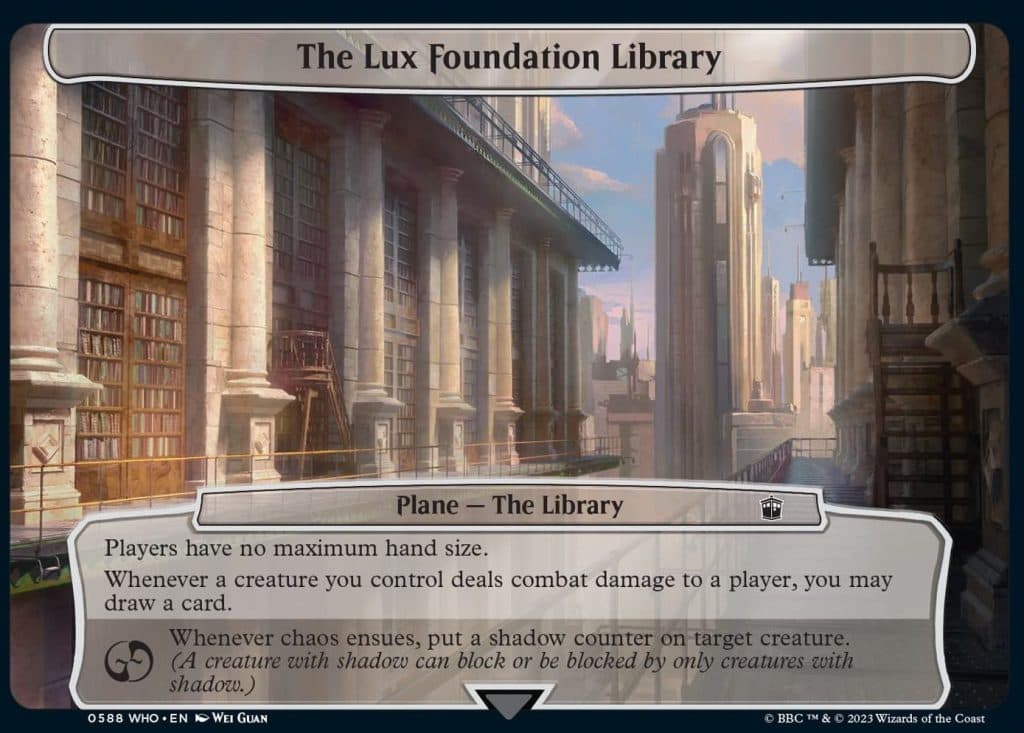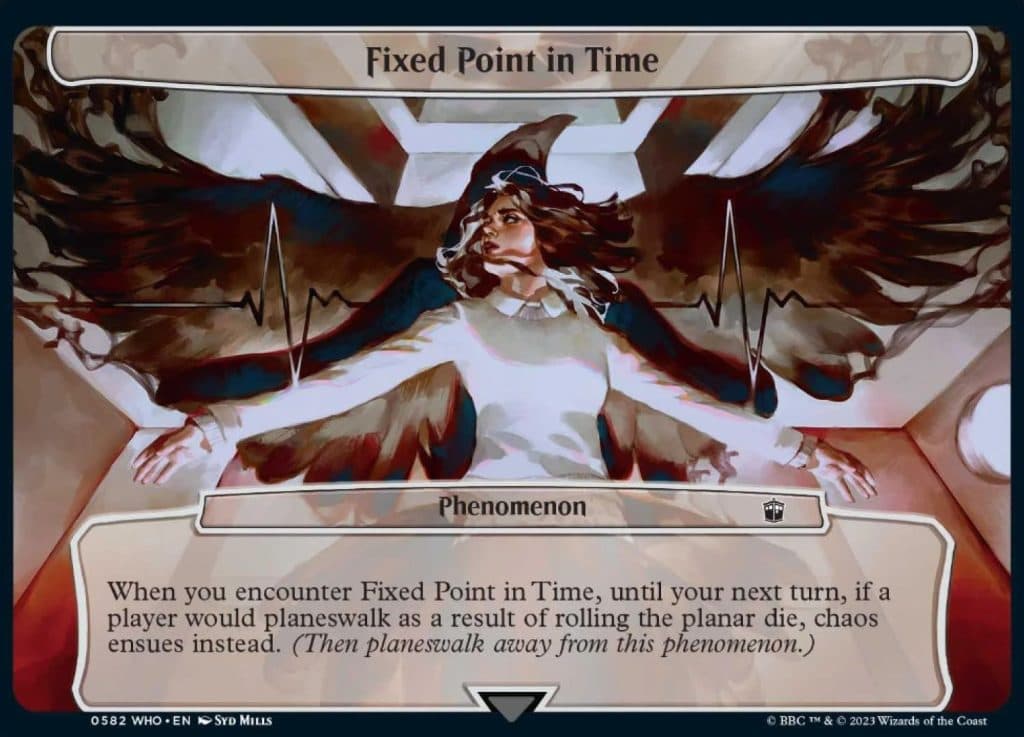MTG Universes Beyond Doctor Who: Planechase and Chaos Ensues explained
 WOTC
WOTCExplore some of the key mechanics of Doctor Who: Universes Beyond, as we dive into what Planechase is and what happens when Chaos Ensues.
Doctor Who owes a large part of its longevity and cult status to its initial premise. Wandering across the whole of time and space, Doctor Who is a show with the ability to showcase almost anything its writers can dream up.
Naturally, Doctor Who’s world-hopping adventures make it a perfect fit as an MTG Universes Beyond set. But specifically, it makes an even better fit for the Planechase game type. Wizards seem to be making a push to revitalize the format of late and Universe Beyond: Doctor Who is the perfect place to do it.
MTG Doctor Who: Explaining Planechase

Planechase is a format of MTG that adds to the fiction of playing as powerful planeswalkers. In practice, its gameplay is similar to many of MTG’s other multiplayer formats. Players may use decks crafted for other formats if they wish, as the only thing Planechase adds in terms of cards is planar decks.
Planar decks are sets of cards that represent planes of existence, locations, or iconic moments from across the breadth of MTG – or in this case Doctor Who.
From the Lux Foundation Library to the DoctorDonna’s Human-Timelord Metacrisis, these cards sit outside of a player’s usual playable cards, being collected in planar decks instead.
Each player begins a game with their own ten-card planar deck. It is also viable to create a shared planar deck that all players draw from instead. When a plane is drawn and played from any deck, its passive effect applies to every player in the game. Effects vary from plane to plane, with many being beneficial to some players and harmful to others.
In order to leave the plane, players must roll the six-sided planar die. One side of the die has the planeswalker symbol, another has the chaos symbol, and the remaining four are blank.
When the planeswalker side comes up, that player may choose to planeswalk, placing the current plane on the bottom of the planar deck and drawing a new plane from either their personal deck or the shared deck.
The planar die can only be rolled at Sorcery speed, so don’t go trying to jump between planes on your opponents’ turns! And for every roll per turn beyond the first, players must expend an increasing amount of mana to roll.
What Chaos Ensues means

You will be able to see ‘Chaos Ensues’ in the text of several MTG Doctor Who cards such as Missy, and this effect is only viable when playing the Planechase format.
When rolling the Chaos symbol on the planar die during a game of Planechase, Chaos Ensues! Each plane card in the planar deck has its passive effect, but it also has a Chaos effect that only triggers when the die is rolled. These effects are usually souped-up compared to the plane’s passive effects, and can significantly impact the state of the match.
Rolling chaos does not cause the current plane to be removed, so it’s possible for Chaos to ensue multiple times on a single plane before players can leave.
Planechase and Doctor Who
Planechase is a casual format that emphasizes fun, chaotic play with unexpected outcomes over overt competitiveness. In this freewheeling spirit of adventure, Planechase meshes perfectly with Doctor Who.
If you click on a product link on this page we may earn a small affiliate commission.



